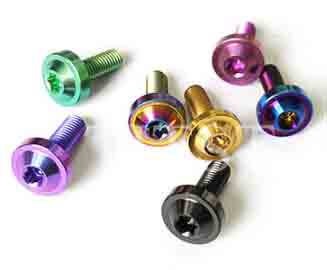Hex screws are distinguished by their six distinct sides.
An Allen wrench is required whenever Internal Hex screws are either being installed or removed. In order to use the screws, you will need to do this first. If you have ever purchased pieces of furniture that you have to completely assemble (ahem... perhaps from IKEA), or at least partially assemble, then it is likely that you have come across this type of screw, or needed it, at some point in the past.
Quadrex
The hybrid screw surface treatment known as the Quadrex combines the Robertson square head and the Phillips flat head in one convenient package. They are not used very frequently, but because they provide a great deal of stability, those who do use them are able to get a great deal of work done in a relatively short period of time. It is an excellent choice for activities that require a great deal of driving, such as building a deck or constructing a frame, because this design permits the application of a great deal of torque, and it is an excellent choice for those activities.

The Outline of the Head
Other head shapes, such as the oval-head screw, have a portion of the head that protrudes above the surface for decorative purposes. While some head shapes, such as the flat-head and bugle-head screws, are designed to fit countersunk holes, other head shapes, such as the oval-head screw, do not.
Screws with non-countersunk heads, such as those with round heads or pan heads, are flush with the surface they are fastened to.
The diagram presents an illustration of four distinct styles of heads, including an oval countersunk head, a flat countersunk head, a round head, and a pan head, neither of which are countersunk. Following the installation of the screw, it will come to rest on the surface in the position denoted by the red line.
It is up to you to decide whether you want to use a screw surface treatment that has a countersunk hole or one that does not have a countersunk hole. If you do not want the head of the screws to be visible on the surface of the material you are working with, the best option is to select a screw surface treatment that has a head that has been countersunk into the surface of the material. In addition to this, you need to pre-drill the hole, and if you don't already have one, you should look into purchasing a countersinking drill bit. By predrilling the wood, you reduce the likelihood that the wood will split, you make the project look cleaner overall, and you can give it a nice finished look by plugging the holes with pieces of wood. All of these factors contribute to our conviction that predrilling is a sound business decision.
When choosing a head type, it is essential to take into consideration not only how the head appears or the aesthetically valuable aspects of the head, but also how safe the head is. When building something like a piece of furniture, for example, you should work hard to eliminate the possibility of having any screws heads sticking out from the surface. This is done for reasons of public health and safety. The use of countersunk screws is without a doubt the superior choice when it comes to baby cribs, conference tables, office chairs, and other items that are functionally equivalent.
When working with hardwoods, it is of the utmost importance to predrill a pilot hole before installing any type of screw, regardless of whether the hole will be countersunk or not. However, this is a good practice to follow in general. The size of the pilot hole will be determined using as its point of departure the dimension of the screw's minor diameter, which is also referred to as the inside threads. When working on a project, doing so can save a lot of time and prevent a lot of frustration. Additionally, it can protect the project from cracking, splitting, and becoming weaker over time.
Sizes
There are two dimensions that need to be considered when determining the appropriate length and diameter of the screw. These are the length and the diameter.
Length
Although it may appear to be self-explanatory, the concept of length is in fact quite complicated because it does not simply refer to the distance between one end and the other. The length is measured from the end that is opposite the screw surface treatment head to the area where the screws would rest on a surface. This creates the starting point for the measurement. This distance is taken into account when determining the total length.
To get a clearer picture of what I mean by this concept, take a look at the image that I've included down here. At the point where the red solid line and the red dashed line intersect is where you should begin your measurement of the various screw surface treatment heads. If you can believe it, all of these are the same length in accordance with the measurement standards for values. If you can't believe it, you can always measure one for yourself. In the case of the two countersunk screws on the left, the head is either included in the measurement in its entirety or is included as part of it. On the other hand, in the case of the two countersunk screws on the right, the head is not included in the measurement in any way.